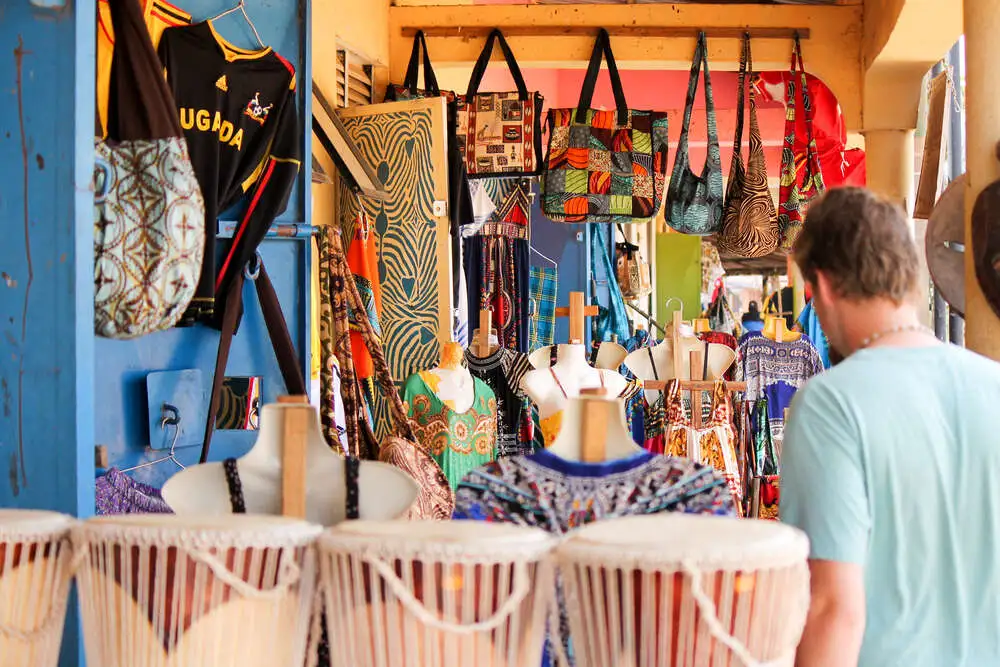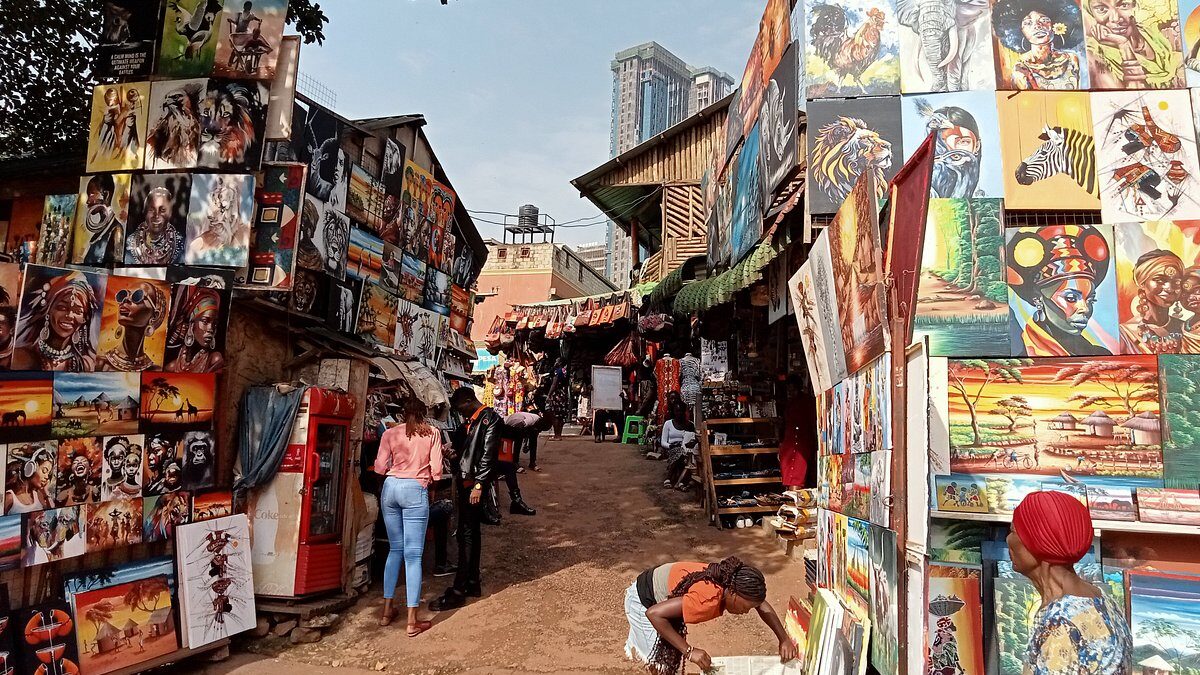
Best Coffee Tours in Uganda | Experiya Tour Company
October 29, 2025
Daily Life in a Ugandan Village | Experiya Tour Company
October 29, 2025Can I Buy Ugandan Crafts and Souvenirs Locally?
Uganda, the Pearl of Africa, is not only famous for its breathtaking landscapes, abundant wildlife, and warm-hearted people but also for its vibrant arts and crafts scene. For travelers who want to take home a piece of the country’s beauty, Uganda offers a rich array of locally made crafts and souvenirs that tell stories of heritage, tradition, and creativity. From handwoven baskets and carved wooden sculptures to intricate beadwork and bark cloth art, every item reflects the cultural soul of this remarkable nation.
Whether you are exploring bustling city markets in Kampala, remote craft villages near national parks, or lakeside artisan stalls, you’ll find authentic Ugandan craftsmanship that supports local communities and keeps age-old traditions alive. The country’s artisans are known for their resourcefulness, using natural and recycled materials to create masterpieces that are both beautiful and sustainable.
If you’re wondering where to buy local crafts in Uganda, what items to look for, and how to ensure your purchases are authentic, this detailed guide will take you on a journey through Uganda’s colorful world of artistry — a world where every souvenir carries a story worth cherishing.
The Art of Ugandan Craftsmanship
Ugandan crafts are not just decorative; they are deeply rooted in culture and daily life. Across the country’s diverse tribes and regions, craftsmanship has been passed down through generations as both a practical skill and an art form. Traditional artisans often work from home or small community workshops, combining ancient techniques with modern designs to meet the tastes of today’s travelers.
Many crafts are inspired by nature and the environment — banana fibers, papyrus reeds, cow horns, clay, and wood are transformed into intricate works of art. These creations often carry symbolic meanings tied to tribal identity, spirituality, and storytelling. For instance, geometric basket patterns from the west represent community unity, while animal carvings from central Uganda symbolize strength and wisdom.
Buying crafts in Uganda is more than just shopping — it’s a way of connecting with the people and their history. Each piece you take home is a reflection of Uganda’s vibrant spirit and resilience.
The Most Popular Ugandan Crafts and Souvenirs
Handwoven Baskets and Mats
Baskets are among the most iconic crafts in Uganda. They are traditionally made by women using dried grasses, palm leaves, or raffia fibers, often dyed in natural colors derived from plants and roots. The weaving techniques vary by region: the western highlands produce tightly coiled baskets used for carrying food or storing grains, while the central and eastern regions specialize in decorative designs perfect for wall hangings or gifts.
One of the most popular types is the Rwanda-Uganda basket, known locally as “Agaseke.” Its conical shape and intricate patterns have become a symbol of peace and togetherness. Many travelers also buy woven mats that serve as table runners, placemats, or even wall décor.
When you visit local markets, don’t hesitate to talk to the artisans. They are often happy to explain the meaning behind the colors and patterns of each basket — making your purchase even more meaningful.
Bark Cloth – Uganda’s Ancient Fabric
Uganda is one of the few countries in the world that still produces bark cloth, a UNESCO-recognized cultural heritage material. Originating from the Buganda Kingdom, bark cloth is made by carefully harvesting the bark of the Mutuba tree (Ficus natalensis) without harming it. The bark is then soaked, beaten, and stretched until it forms a soft, suede-like fabric with a distinctive reddish-brown hue.
Historically, bark cloth was worn by kings, chiefs, and spiritual leaders and used during important ceremonies such as weddings and funerals. Today, artisans use it to make handbags, wallets, hats, shoes, wall art, and even modern fashion items.
Buying bark cloth products is a great way to own a piece of Ugandan heritage while supporting the communities that continue to preserve this traditional craft.
Wood Carvings and Sculptures
Ugandan wood carvings are another must-buy souvenir. Skilled craftsmen use local hardwoods such as mahogany, mvule, and jacaranda to carve everything from animals and masks to human figures and household decorations.
Common themes include wildlife — elephants, gorillas, lions, and giraffes — representing Uganda’s safari heritage. You’ll also find beautifully carved drums, stools, and walking sticks. Many carvers work in cooperative groups, ensuring that their trade sustains families and communities.
A particularly famous spot for wooden art is the Buganda Road Craft Market in Kampala, where you can find exquisite carvings that make perfect gifts or centerpieces for your home.
Beadwork and Jewelry
Beaded jewelry in Uganda is more than adornment; it’s storytelling. The beads themselves, often made from paper, clay, or glass, are rolled, painted, and strung by hand, each representing a piece of a woman’s creativity and resilience.
Paper bead jewelry has become especially popular as a sustainable fashion statement. Artisans recycle old magazines and posters to make colorful beads, creating necklaces, earrings, and bracelets that are both eco-friendly and beautiful.
Several women’s groups across Uganda, such as Bead for Life, have empowered thousands of women by training them in bead-making. Purchasing their jewelry directly supports these initiatives, helping women achieve economic independence while spreading Uganda’s artistry around the world.
Banana Fiber Crafts
Banana plants are an integral part of Ugandan life, and artisans have found innovative ways to use their fibers. Dried banana stems and leaves are woven or molded into items such as trays, coasters, handbags, and decorative dolls.
One of the most unique products is banana-fiber art — intricate pictures crafted entirely from banana fibers of different shades. These artworks often depict African wildlife scenes, traditional dances, or village life. They are lightweight, affordable, and make excellent souvenirs for travelers who want to carry home something authentic yet easy to pack.
Pottery and Ceramics
Pottery has long been a staple of Ugandan culture, particularly among the Baganda and Banyankole communities. Local potters shape clay into cooking pots, water jars, and decorative vases, which are then fired using traditional kilns.
Modern Ugandan potters have expanded their creativity, making glazed ceramic bowls and sculptures that blend traditional craftsmanship with contemporary design. These make stunning additions to home décor and are often sold in artisan cooperatives and tourist markets.
Ugandan Musical Instruments
If you’re drawn to music, Uganda’s traditional instruments make fascinating souvenirs. The adungu (bow harp), endingidi (one-string fiddle), engalabi (long drum), and akogo (thumb piano) are beautifully crafted and often decorated with carvings and beads.
Even if you don’t play an instrument, they make wonderful decorative pieces that represent Uganda’s rich musical heritage. Many performers at cultural centers, such as the Ndere Cultural Centre in Kampala, sell handmade instruments after their shows.
Paintings and Art Prints
Modern Ugandan artists are flourishing, combining traditional themes with contemporary techniques. From vibrant acrylic paintings of Kampala’s bustling streets to wildlife-inspired oil portraits, art galleries in Kampala, Jinja, and Entebbe showcase exceptional local talent.
Popular art hubs include the Nommo Gallery, Afriart Gallery, and Makerere Art School, where you can meet artists and even commission personalized pieces. Street markets also offer affordable prints and paintings that capture the color and life of Uganda.

Where to Buy Crafts and Souvenirs in Uganda
1. Buganda Road Craft Market – Kampala
Located in the heart of Kampala, this open-air market is one of the best places to buy local crafts. You’ll find hundreds of stalls selling baskets, jewelry, paintings, textiles, and carvings. Bargaining is part of the experience, and it’s a great way to interact with artisans directly.
2. National Crafts Village – Kampala
Situated near the Uganda National Theatre, the Crafts Village is another treasure trove of Ugandan art. It’s a quieter and more organized alternative to street markets, ideal for travelers who want to browse at leisure.
3. Jinja and the Source of the Nile
Jinja, known as the adventure capital of East Africa, also boasts excellent craft shops along Main Street and near the Nile River. Here, you’ll find handmade souvenirs inspired by the river — from canoe carvings to woven baskets dyed in aquatic blues and greens.
4. Entebbe Craft Shops
Before flying out, visitors can shop for last-minute souvenirs at Entebbe’s craft markets, located near Victoria Mall and along Airport Road. The quality here is high, and you’ll find everything from bark cloth items to banana-fiber art.
5. Regional Cooperatives and Village Markets
In western Uganda, especially around Fort Portal, Kabale, and Kisoro, you can visit women’s cooperatives and local markets that specialize in handmade crafts. Buying directly from these artisans ensures that your money goes straight to the community that created the product.
Tips for Buying Ugandan Crafts
- Buy directly from artisans whenever possible. It supports fair trade and ensures authenticity.
- Negotiate politely at open markets, but remember that your purchase helps sustain livelihoods.
- Avoid mass-produced imports that sometimes mimic local designs. Authentic crafts are handmade and unique.
- Ask about the story behind the item. Most artisans love sharing their inspiration and techniques.
- Consider size and transport — some items, like drums or carvings, may require extra luggage space.
Why You Should Travel With Experiya Tour Company
If you want to experience Uganda’s craft culture in the most authentic and meaningful way, Experiya Tour Company is the perfect travel partner. Experiya specializes in immersive tours that connect travelers with the people behind Uganda’s artistry. Their guided experiences include visits to craft markets, artisan workshops, and cultural centers, where you can watch crafts being made, learn the skills yourself, and purchase directly from the creators.
With Experiya, you’ll go beyond the typical souvenir shopping — you’ll meet the women weaving baskets in western Uganda, see bark cloth artisans in Buganda, and discover hidden craft cooperatives around the Nile. Their knowledgeable guides ensure that every experience supports local communities and helps preserve Uganda’s cultural heritage.
Book your Ugandan adventure with Experiya Tour Company and take home more than souvenirs — take home stories, friendships, and memories crafted from the heart of Africa.




